2013-04-01 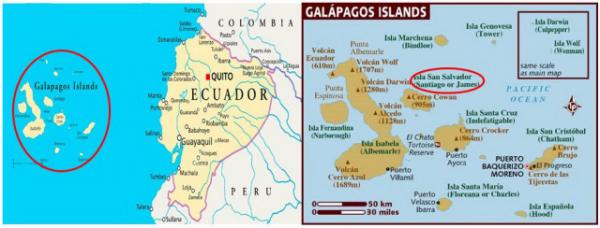
【Aiden in English】
The rocks crunched beneath our feet as we walked through tropical forests with singing mockingbirds and buzzing insects. This morning, we took our first shore excursion to the west bank of Santiago Island, in the center of the Galapagos archipelago. Puerto Egas was one of the most popular sites in James Bay of Santiago Island, where salt mining operated until the 1960s. After a wet landing in the icy water on the dark sand of Espumilla Beach at James Bay, we started a hike in steadily growing heat. The first animal I would dare approach was a Lava Lizard. It ate insects and gained popularity by crawling in every part of the island. I thought that lava lizards had a pretty easy life compared to how many bug bites I already had. We soon visited Buccaneer Cove, which had been cooled by lava and made a perfect ecosystem for marine animals. Life was highly abundant near the seashore. The morning glories covered the volcanic rocks like blankets—a large ground finch perched on a giant prickly pear. Marine Iguanas often shared the same playground with the brilliant Sally Lightfoot Crabs. Sea Lions, Galapagos Doves, American Oystercatchers, whimbrels, and brown pelicans were also present, along with the more unusual green turtles, Yellow-crowned Night herons, and Lava herons. Fortunately, Iguanas had no predators here. But most baby Sally Lightfoot Crabs had to be aware of many types of seabirds that enjoyed juvenile crabs for breakfast. We continued to walk down a trail along the rocky coast that led to the extraordinary grottos, home to Galapagos fur seals. At that moment, the green turtle visited them, and both buddies performed a talent show for their underwater acrobatics in perfect synchronization. We discussed the vegetation in the island's interior, which had been decimated by at least 50,000 feral goats. It was said that goats had inhabited Santiago Island since 1813, when Captain Porter of the USS Essex allowed four of them to escape. Overpopulated goats resulted in the unexpected loss of a food source, which threatened not only the native vegetation but also native animals, such as the giant tortoise and land iguana. I didn't see many fish onshore until I went snorkeling. As soon as I put on my gear, I started to doubt. However, I pushed the lousy question away and took a deep breath to dive underwater. The coral appeared more significant than I thought! Hundreds of fish darted around a large rock covered with sea urchins and algae. Some fish swam in circles as if on a highway, while others fed on seaweed. A Giant Hawkfish looked like a cat. It had blue and brown spots from head to tail with a giant eye. Then, a large Bicolor Parrotfish moved beneath a rock. When I went closer, it had joined another fish that looked the same. Probably, it was its baby. They were small but never afraid of me. Both acted as if I were some new species of marine life. I broke to the surface just in time and saw the tour guide waving his hand to come off. The black volcanic sand beach looked perfect for snorkeling. I want to extend my stay and soak up the sun in this paradise. 【红霞译】
行进在热带丛林之中,我们脚下的岩石有节律地发出嘎嘎响声,“鹤立花边玉,莺啼树杪弦”,仿声鸟高调欢唱,小昆虫窃窃私语。今天上午我们首次出游加拉帕戈斯“巨龟”群岛,登陆中央腹地圣地亚哥“后继者”岛西部海岸。 埃加斯“勇敢”港实为上个世纪六十年代被遗弃的盐矿,如今可谓圣地亚哥岛詹姆斯“后继者”湾最知名的旅游胜地之一,埃斯普米拉“泡沫”海滨黑色沙滩宛若詹姆斯湾晶莹闪亮的珍珠十分诱人,我们涉水上岸,沿羊肠小道深入内陆,这时气温开始逐渐回升。
迎候我们的第一只动物是熔岩蜥蜴,素以昆虫为食,走街串巷无所不至。它生活安逸,从来没有内忧外患;而我却不同,现已被蚊虫折磨得焦头烂额。
“百啭千声随意移,山花红紫树高低”。海盗小海湾别有洞天,由火山熔岩冷却后形成的海滩沙丘为海洋生物提供了优质的生态环境,因此招来了众多海洋生物驻足。牵牛花风华正茂,给黑色礁石表面铺上了厚厚的毯子;大嘴地雀自由自在,游刃于布满荆棘的巨型仙人掌茎叶之间;海鬣蜥出没的地方,必定有莎莉“公主”轻足蟹矫健的身影;海狮、加拉帕戈斯哀鸽、黄顶夜鹭、美洲蛎鹬、中杓鹬、褐鹈鹕优哉游哉,刻意坚守固有的地盘;绿海龟、熔岩鸥和熔岩鹭虽然难得露面,不过我们还是有幸目睹其飒爽英姿。值得一提的是,海鬣蜥没有自然天敌,因此能够随心所欲,想怎么生活就过什么日子;而莎莉轻足蟹的年幼子女却要为如何生存煞费苦心,作为各种海鸟蚕食的对象,它们随时都会面对生与死严酷挑战,如果说弱肉强食符合生存竞争规律,那么适者生存在很大程度上成全了自然选择。
我们沿海岸线继续前进,小径的尽端便是有名的石窟,海浪长期冲击礁石,磨蚀了中央岩层,结果形成很大窟窿,加拉帕戈斯毛皮海狮索性把它当成嘻水打闹的池塘;绿龟常常不请自来,相约毛皮海狮尽展才艺,有节奏地表演水下杂技。 加拉帕戈斯群岛的植被环保是我们关心的话题之一,听说早在1813年美国埃塞克斯“东撒克逊人”号舰波特“门卫”船长途经此地曾有意留下四只山羊,结果其列子列孙超生超育,羊口一跃成为当今加拉帕戈斯群岛首当其冲的老大难问题。以圣地亚哥岛为例,野山羊泛滥成灾,当地仙人掌产量因而急剧下降,不但破坏了大自然食物链,而且还直接威胁着赖以生存的巨龟和陆鬣蜥性命。 随大家信步漫游岸边,我并没有察觉鱼翔浅底,可一旦等我全副武装潜入水下才发现海底世界五彩缤纷,珊瑚比我想象的还要大!海胆喜欢栖息在海藻丰富的礁石周围,数以百计的鱼群竞相飞舞,有的热衷兜圈子,好像行驶在高速公路;有的爱好吃东西,没完没了。大飞鹰鱼外表像只猫,全身上下间或有蓝褐色斑点,一只贼大的眼睛直挂脑门中央;双色鹦哥嘴鱼在岩石下游动,当我凑上前来,它跑去找跟自己模样相仿的同伴,也许这是它的宝宝,鱼小胆不小,它们在我面前毫不畏惧,保不准儿我被当成它们的同类。这时我浮出水面,正好看到导游招手示意返航。 黑色熔岩细沙特别适合潜水,我真希望能多呆些时候,好好地在世外桃源里沐浴阳光。 Today in History(历史上的今天): 2013: Rabida Island, Ecuador(厄瓜多尔野蛮岛) 2012: 演讲训练(Speech Practice) 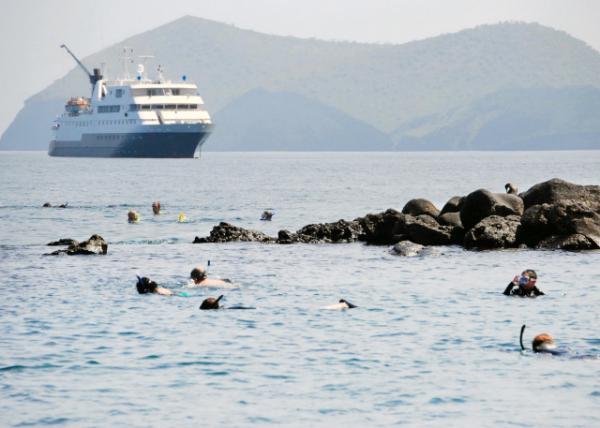 James Bay of Santiago Island, a Volcanic Crater w/ a Seasonal Salt-Water Lagoon James Bay of Santiago Island, a Volcanic Crater w/ a Seasonal Salt-Water Lagoon
(圣地亚哥岛詹姆斯湾·拥有季节性咸水泻湖的火山口) 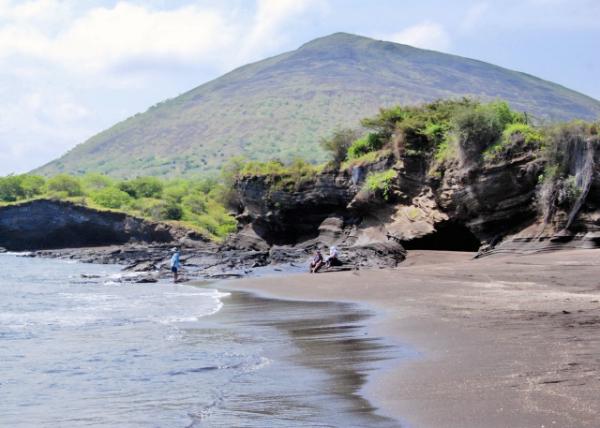 Puerto Egas, an Abandoned Salt Mine Puerto Egas, an Abandoned Salt Mine
(埃加斯港·被遗弃的盐矿)
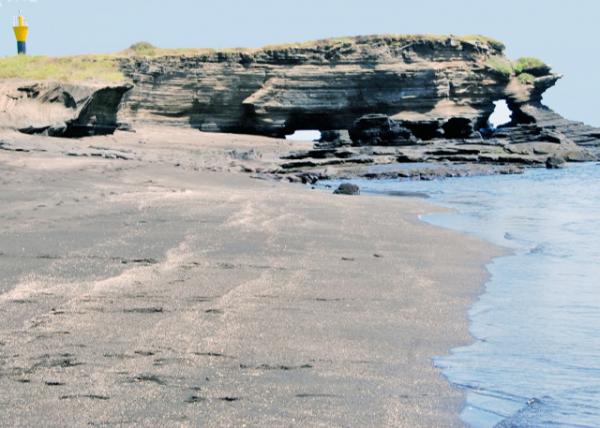 Rock Formation @ Puerto Egas (埃加斯港·岩层) Rock Formation @ Puerto Egas (埃加斯港·岩层)
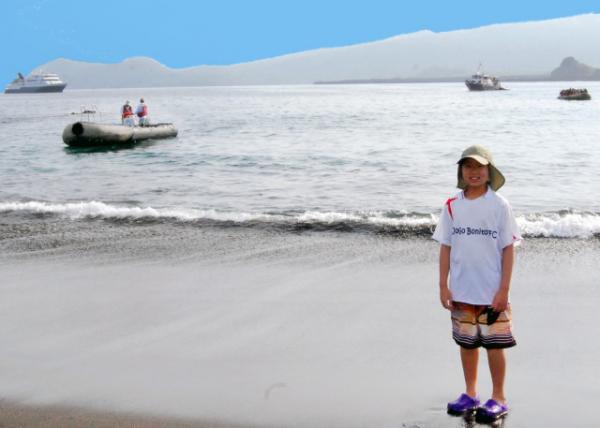 Wet Landing, Transported from Celebrity Xpedition to the Shore in a Smaller, Inflatable Zodiac, Stepped out of the Zodiac & into Shallow Water, Wading to the Dry Land Wet Landing, Transported from Celebrity Xpedition to the Shore in a Smaller, Inflatable Zodiac, Stepped out of the Zodiac & into Shallow Water, Wading to the Dry Land
(湿着陆——从“名人·远征”号游轮乘坐小型橡皮艇抵达岸边,走出充气艇后直入浅水区,再涉水前往干燥的陆地 04-01-2013) 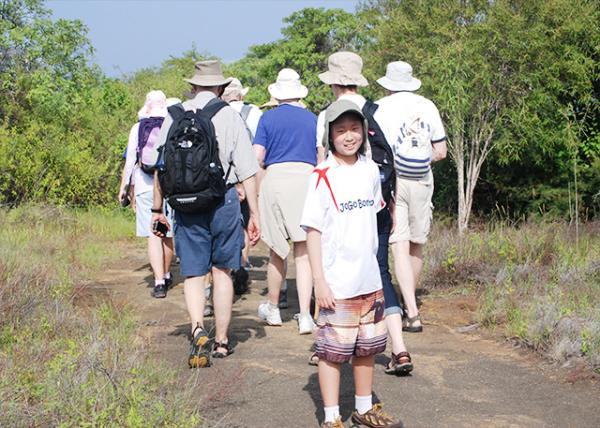 Palo Santo Trees Endemic to the Galapagos Islands, Associated w/ Healing & Cleansing Powers Palo Santo Trees Endemic to the Galapagos Islands, Associated w/ Healing & Cleansing Powers
(加拉帕戈斯群岛特有的圣木·具有治愈和净化功效 04-01-2013)
 Morning Glory Field (牵牛花地 04-01-2013) Morning Glory Field (牵牛花地 04-01-2013)
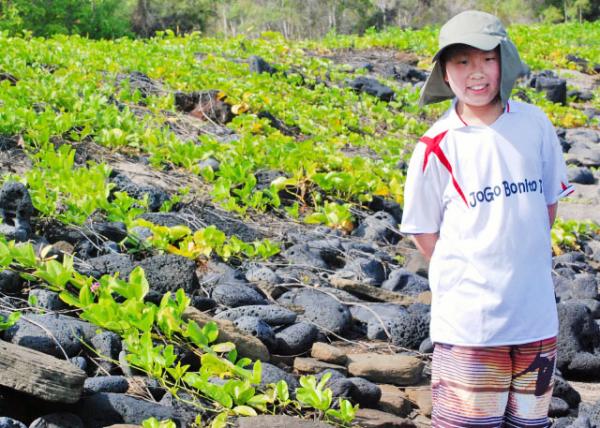 Saltwater Paludarium (盐水沼泽地 04-01-2013) Saltwater Paludarium (盐水沼泽地 04-01-2013)

Giant Prickly Pear Cacti (巨型仙人掌 04-01-2013) 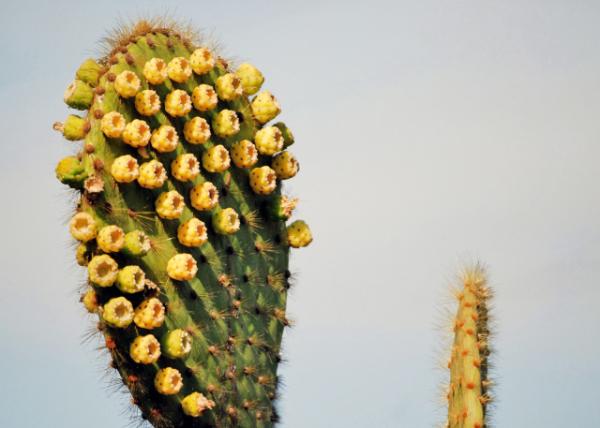 Giant Prickly Pear Cactus Flower, Symbolizing Resilience, Strength, & the Ability to Overcome Adversity Giant Prickly Pear Cactus Flower, Symbolizing Resilience, Strength, & the Ability to Overcome Adversity
(巨型仙人掌花·象征韧性、力量和克服逆境的能力) 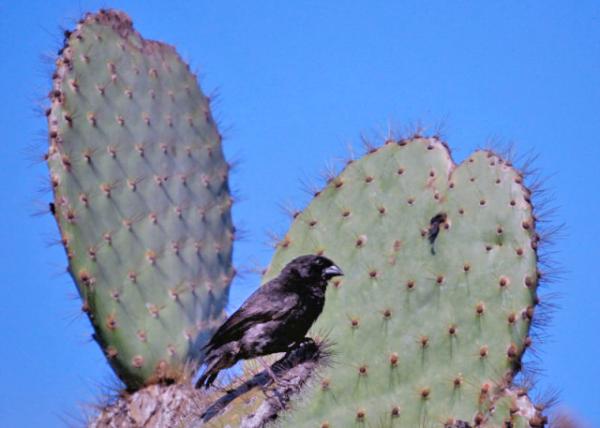 Large Ground Finch, the Largest of Darwin's Finches Large Ground Finch, the Largest of Darwin's Finches
(大嘴地雀·最大的达尔文雀) 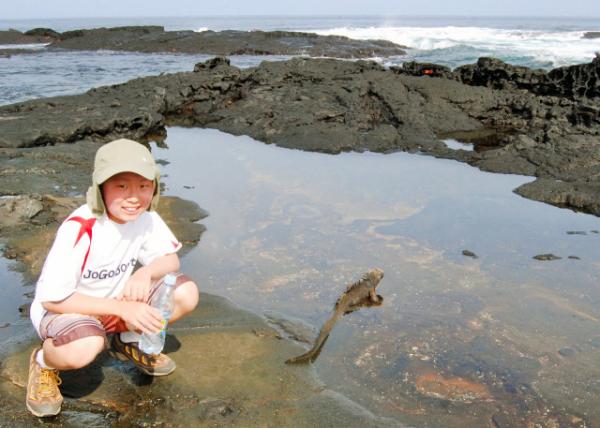 Buccaneer Cove, Home to a Variety of Sea Galapagos Birds, Sea Lions, & Fur Seals Buccaneer Cove, Home to a Variety of Sea Galapagos Birds, Sea Lions, & Fur Seals
(海盗小海湾·各种加拉帕戈斯海鸟、海狮和海狗的家园 04-01-2013) 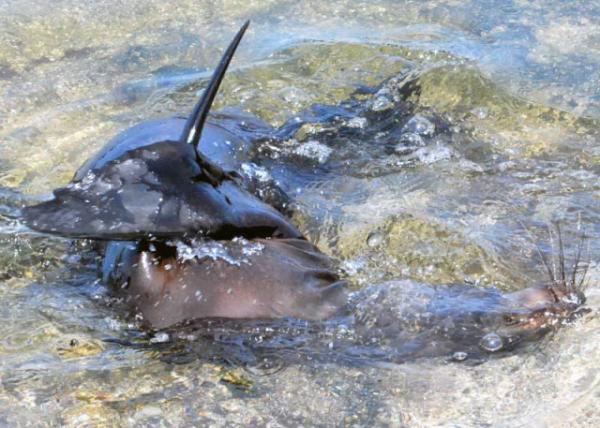 Fur Sea Lion w/ Its Preference for Rocky, Sheltered Coastline Fur Sea Lion w/ Its Preference for Rocky, Sheltered Coastline
(海狗·对岩石密布、避风的海岸线情有独钟)  Fur Sea Lion, Basking in Shallow Water Fur Sea Lion, Basking in Shallow Water
(海狗·开阔的浅水区晒太阳)
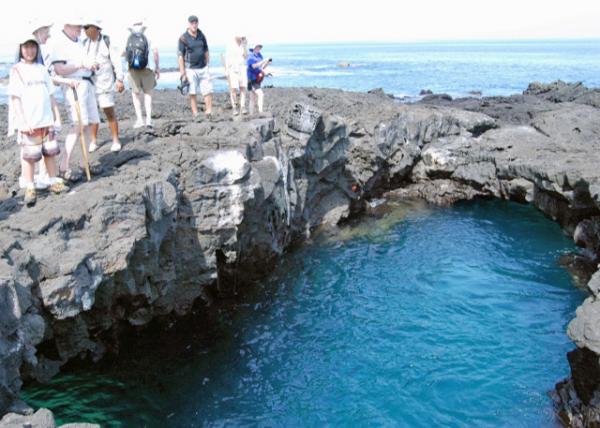 Fur Seal Grotto @ Puerto Egas Fur Seal Grotto @ Puerto Egas
(埃加斯港·海狗岩洞 04-01-2013) 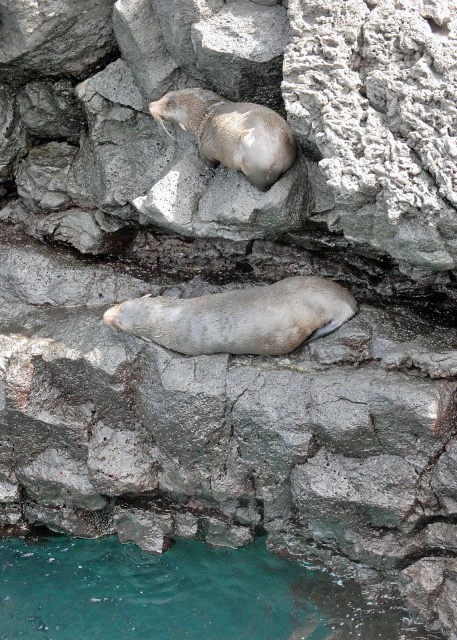
Fur Seals Dwelled in a Refuge from the Sun in the Shade of the Lava Grottos (海狗·栖居熔岩洞穴中躲避烈日) 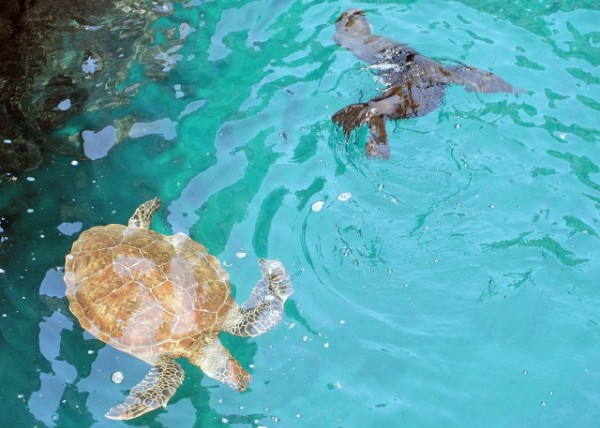
Green Sea Turtle & Fur Seal (绿海龟与海狗) 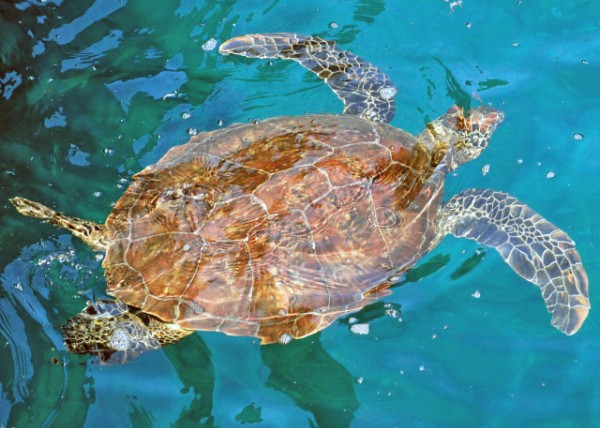
Green Sea Turtle, the Only Species to Nest on the Archipelago (绿海龟·唯一在加拉帕戈斯群岛上筑巢的物种)
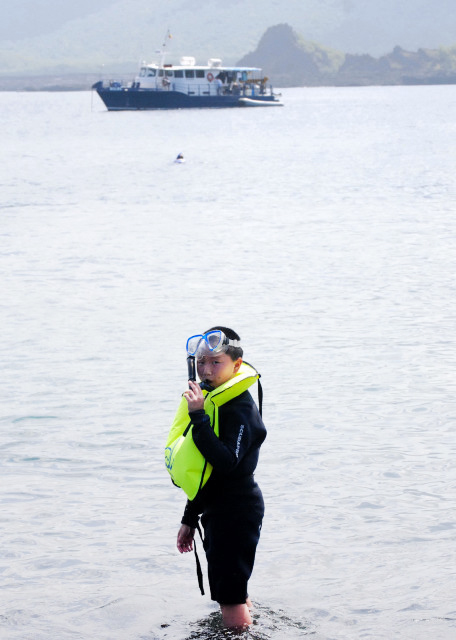
Espumilla Beach Nested for Green Sea Turtles (泡沫海滩·绿海龟的栖息地 04-01-2013)
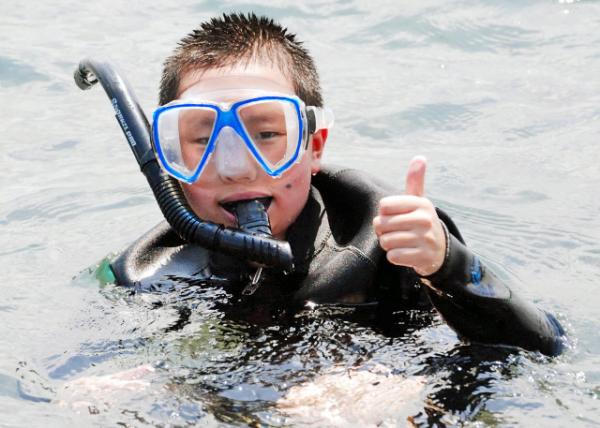 Snorkeling @ Espumilla Beach (泡沫海滩·浮潜 04-01-2013) Snorkeling @ Espumilla Beach (泡沫海滩·浮潜 04-01-2013)
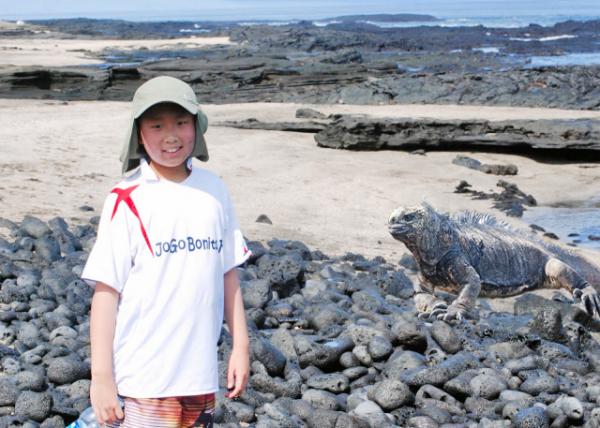 Marine Iguanas on Boulder Beach Marine Iguanas on Boulder Beach
(砾石滩上海鬣蜥 04-01-2013) 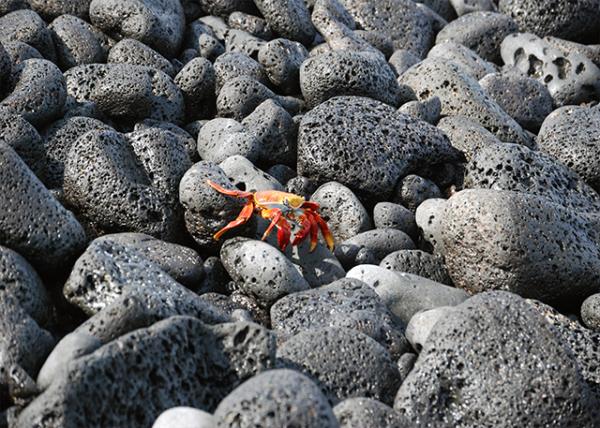 Scoria, a Porous, Dark Volcanic Rock Rich in Gas Bubbles Scoria, a Porous, Dark Volcanic Rock Rich in Gas Bubbles
(火山渣·富含气泡的多孔深色火山岩) 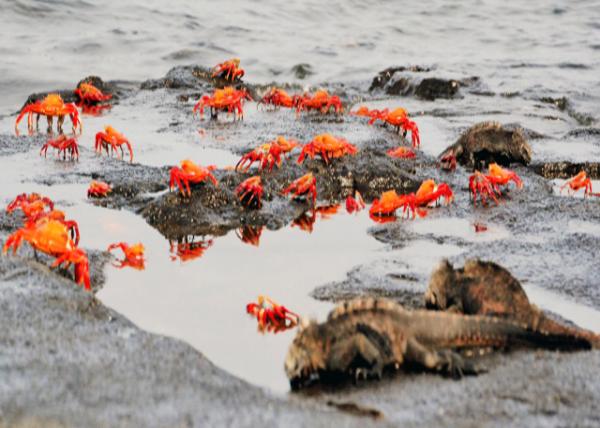 Ubiquitous Sally Lightfoot Crabs & Marine Iguanas Ubiquitous Sally Lightfoot Crabs & Marine Iguanas
(无处不在的莎莉轻足蟹与海鬣蜥) 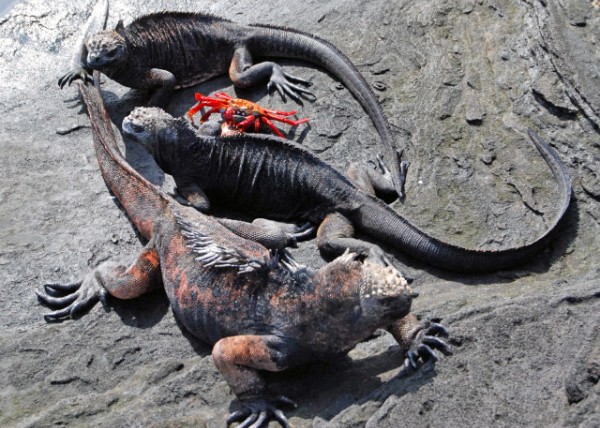
Sally Lightfoot Crabs, Featuring Unique Relationship w/ Marine Iguanas by Eating Parasites & Ticks off Their Skin (莎莉轻足蟹与海鬣蜥独特的共生关系·吃海鬣蜥皮肤上的寄生虫和蜱虫)
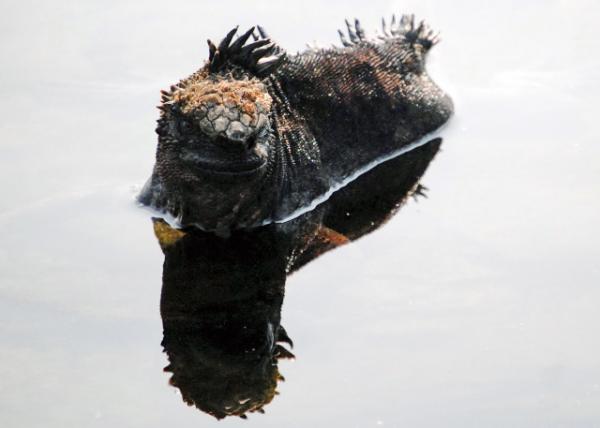 Galápagos Islands, Home to the Only Seafaring Lizard in the World Galápagos Islands, Home to the Only Seafaring Lizard in the World
(加拉帕戈斯群岛·世上海鬣蜥唯一的栖息地) 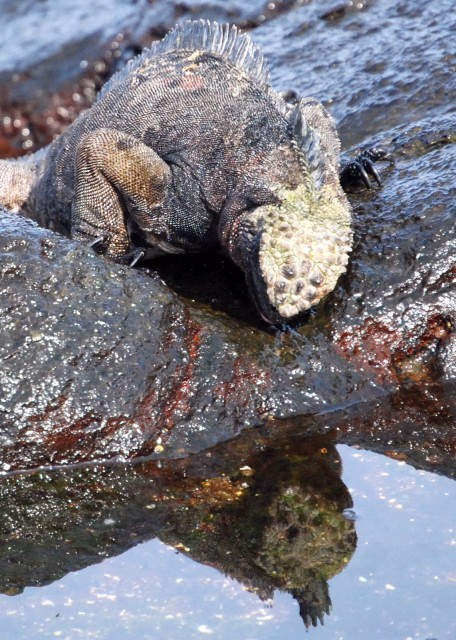
Marine Iguana, the Only Extant Lizard Spending Time in a Marine Environment (海鬣蜥·唯一一种在海洋环境中生活的现存蜥蜴)
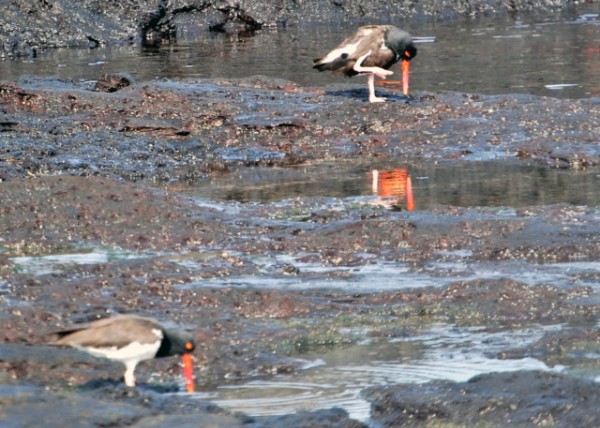
Galápagos Oystercatchers (加拉帕戈斯蛎鹬) 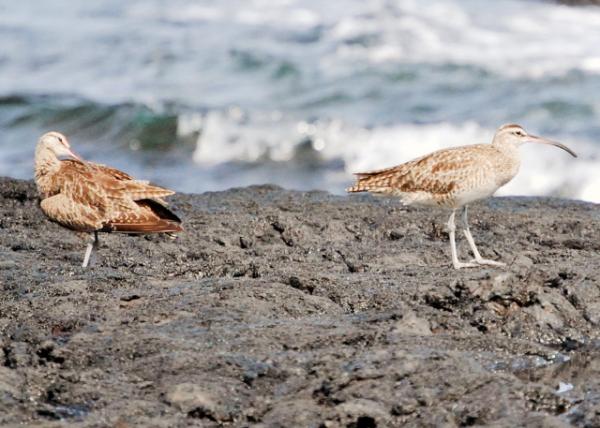 Whimbrels on Rocky Shoreline (岩石海岸线上的杓鹬) Whimbrels on Rocky Shoreline (岩石海岸线上的杓鹬)
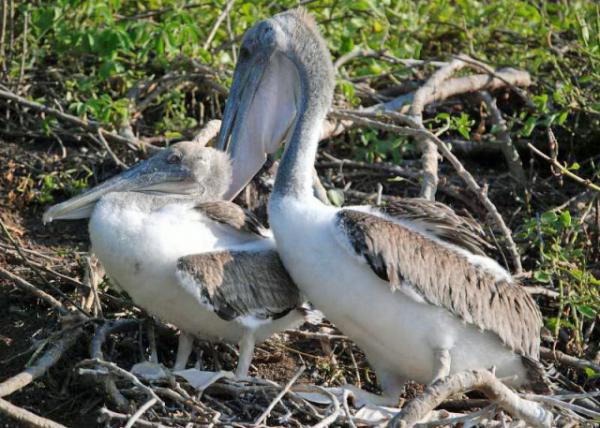 Galápagos Brown Pelican, a Living Symbol of How Successful Wildlife Conservation Can Be Galápagos Brown Pelican, a Living Symbol of How Successful Wildlife Conservation Can Be
(加拉帕戈斯褐鹈鹕·野生动物保护成功的鲜活象征) 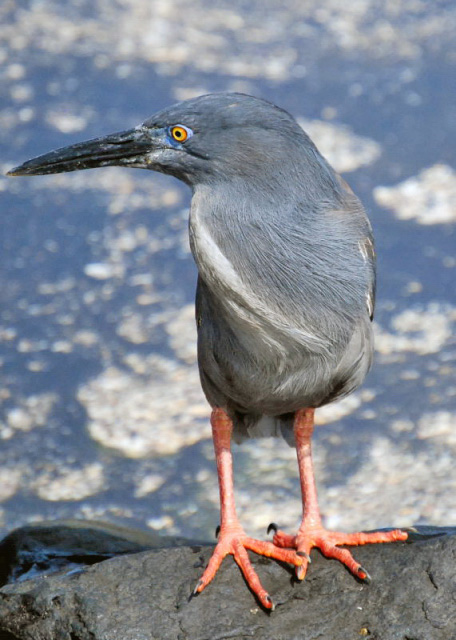
Lava Heron, w/ Its Wonderful Camouflage (熔岩苍鹭·拥有出色的伪装能力) 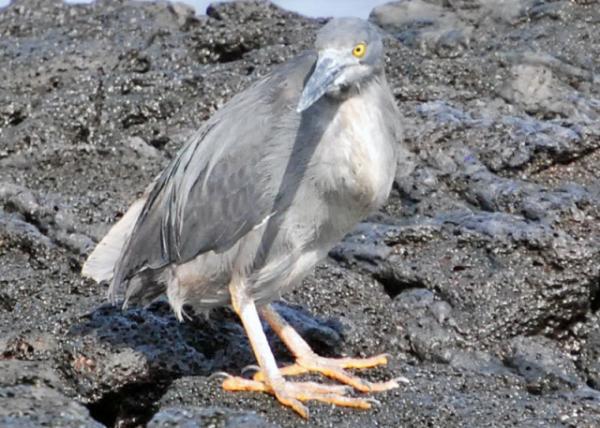 Yellow-Crowned Night Heron, Crab Specialist Yellow-Crowned Night Heron, Crab Specialist
(黄顶夜鹭·捕蟹专家) 
Galapagos Dove, a Ground-Dweller & Crucial Cactus Pollinator (加拉帕戈斯哀鸽·地栖动物,重要的仙人掌传粉者) 
Galápagos Mockingbird w/ Inquisitiveness (好奇心旺盛的加拉帕戈斯仿生鸟) 
Close-up of Galápagos Mockingbird (加拉帕戈斯仿声鸟·特写镜头) 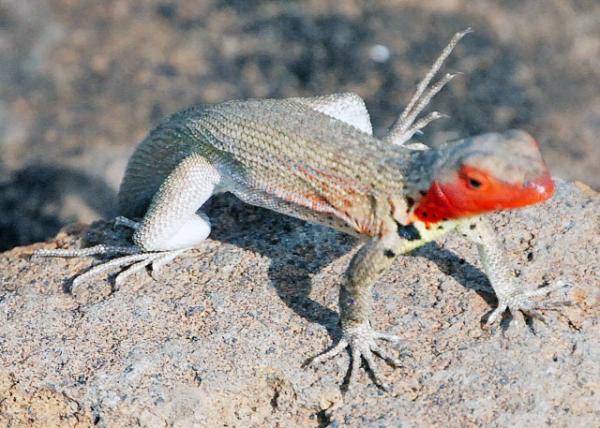 Female Lava Lizard Capable of Tail Detachment as a Defense Mechanism Female Lava Lizard Capable of Tail Detachment as a Defense Mechanism
(熔岩蜥·具有断尾求生防御机制) 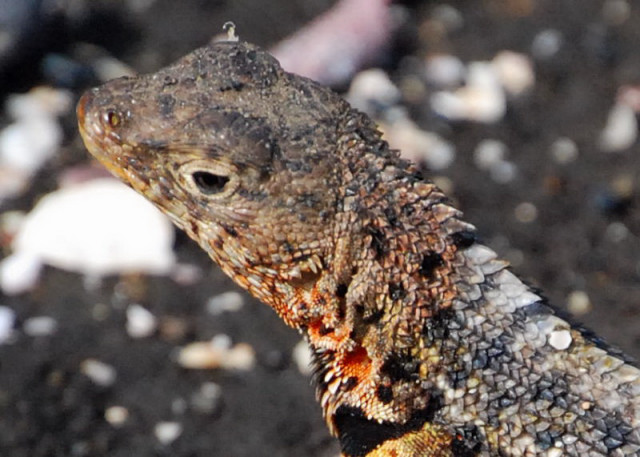
Lava Lizard, Behaved w/ Rapid Head Bobbing & Push-up Stances (熔岩蜥行为模式·快速点头和俯卧撑姿势) 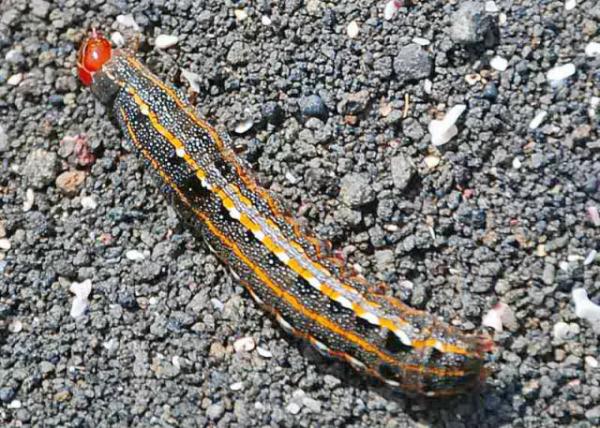 Monarch Caterpillar (斑蝶毛毛虫) Monarch Caterpillar (斑蝶毛毛虫)

Galápagos Western Spotted Orbweaver (加拉帕戈斯西斑圆蛛)
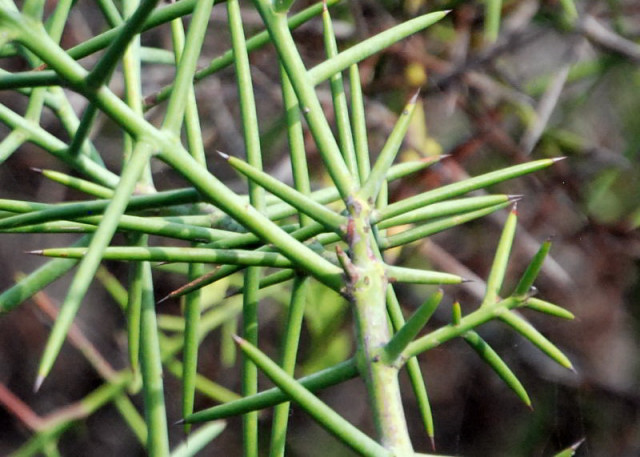 Saguaro Spines (神仙掌柱刺) Saguaro Spines (神仙掌柱刺)
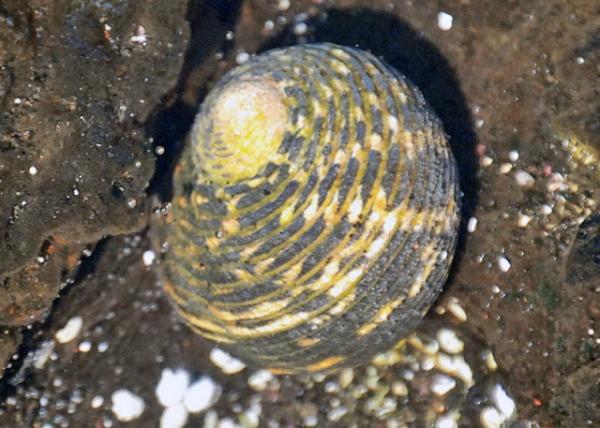
Nerita Snail, Gregarious Herbivore (海螺·群居食草动物)
Crosslinks(相关博文): 2013: Santa Cruz Island, Ecuador(厄瓜多尔十字架岛)
2013: Kicker Rock/Witch Hill, Ecuador(厄瓜多尔睡狮岩女巫岭) 2013: Frigatebird Hill, Ecuador(厄瓜多尔军舰鸟山) 2013: N.Seymour, Ecuador(厄瓜多尔北黑暗岛) 2013: Bachas Beach, Ecuador(厄瓜多尔驳船海滩) 2013: Bartolome Island, Ecuador(厄瓜多尔农夫之子岛) 2013: Sullivan Bay of Santiago Is, ECU(厄瓜多尔圣地亚哥岛·詹姆斯湾) 2013: Isabella Island, Ecuador(厄瓜多尔献身上帝岛) Ecuador(出游厄瓜多尔)
South America(漂流南美洲) 小学四年级(4th Grade) |
